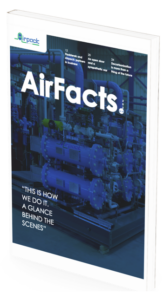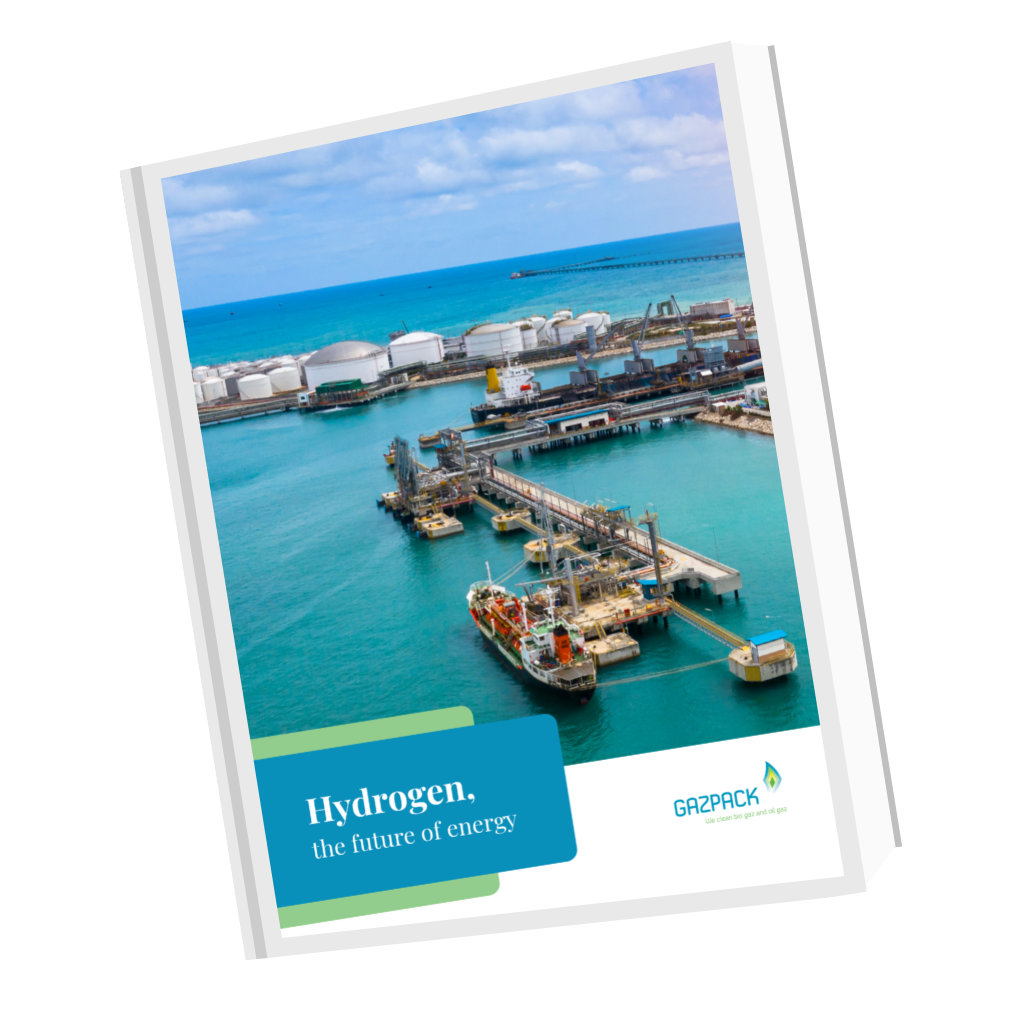Anaerobic digesters – Wastewater treatment for Biogas
Looking to explore the world of biogas processing and handling solutions? Get instant access to our documents about biogas technology.
Treating Wastewater with Anaerobic Digestion
Many people hear the word “wastewater” and think merely of a dirty, unpleasant pool of filth. In fact, wastewater is that and it’s worse: it contains various bacteria, fungi, parasites and viruses that adversely affect individual and public health. E-coli, salmonella, typhoid, roundworm and hepatitis (A and B) are among the organisms found in wastewater. While it sounds like an irredeemable environmental evil, wastewater actually contains something of value: biogas. The capacity to extract carbon dioxide (CO2) and methane (CH4) from this seemingly awful by-product has enormous implications for environmental quality and energy conservation. It all begins with anaerobic digestion.
What’s in Wastewater that has any value?
The biogas from wastewater can fuel combustion engines that convert it to mechanical energy. In turn, this dynamism can power a generator to produce electricity. Thus, what was once less than worthless is now a natural resource. Biogas can power one vehicle or an entire public transit system — and does both at the present time. As noted above, biogas is made up mostly of carbon dioxide and methane. It also has small quantities of nitrogen, hydrogen and carbon monoxide. These components can occur in compost piles, swamps, livestock manure, wildlife droppings etc. They can also be distilled from sources like wastewater.
About Wastewater
Not all wastewaters are created equal — at least in terms of biogas production. The amount of solids within a given volume of water; where the water falls on a pH spectrum (acidity vs. alkalinity); and temperature all come into play regarding the suitability of the wastewater for biogas wastewater treatment. So does the organic strength — an odd term, yes — which is a measure of how much oxygen is absorbed to break down the organic material present in the water. Low-strength wastewater can be more efficiently treated aerobically; high-strength substrate, anaerobically.
How Does Anerobic Digestion Work?
The aim of anaerobic digester wastewater treatment is to reduce the amount of disposable sludge to a minimum. The water and sludge are deposited into an initial tank where they remain between 10 to 20 days, heated to a temperature of just under 100 degrees Fahrenheit. No oxygen is present. This facilitates the transformation of the organic matter contained therein. In the subsequent tank, the constituent materials are sifted and separated: sludge settles to the bottom of the tank with the water rising above. This shrinks the volume of waste matter that will actually have to be disposed of. Afterward, the sludge is thickened and stabilized. This means that the number of hazardous micro-organisms is reduced, as are odors and the potential for further decay. Thickening also — counter-intuitively, perhaps — diminishes the overall volume of the sludge.
The result of this digesters wastewater treatment activity is that 40 to 60 percent of the organic solids comprising the sludge is converted to CH4 and CO2, and less significant amounts of the other elements and compounds. Methane is the most useful wastewater treatment biogas for its combustion capacity. Of the biogas production from wastewater treatment, this CH4 makes up between 60 and 65 percent. The remaining organic material is almost without odor and much less toxic than before. Disposal consumes less energy while the digestion process creates energy.
What Happens when Wastewater Is Treated Aerobically?
Anaerobic treatment departs from aerobic treatment in that ith the former, the organic matter is deprived oxygen in the decomposition process. Aerobic methods employ oxygen to aerate and mix with the contaminants in order to disintegrate the matter. The micro-organisms that can survive and grow in an oxygenated environment then feed on the organic matter, leaving CO2 and biomass in their wake. Worth noting is that aerobic treatment is often coupled with anaerobic digestion to optimize contaminant removal.
When Is Anaerobic Digestion Best Applied?
Using anaerobic techniques is optimal when the organic strength of the wastewater is higher. This means that there is more organic matter per any given volume of wastewater. This is sometimes quantified as over 4,000 ppm (parts per million). Such concentrations are oft times found in the wastewater coming from food and beverage processing facilities, for example, whereas that emitted by some refineries and municipal sewage plants may have concentrations of less than 1,000 ppm and may invite aerobic options. In terms of investment, energy use and sludge yield, anaerobic digestion comes in lower than aerobic.
Examples of Anaerobic Wastewater Treatment
The South Treatment Plant in Renton, Washington houses a fuel cell that converts 154,000 cubic feet of biogas into one megawatt of electricity each day. This output is sufficient to power 1,000 households. Because it is utilized, instead, to power the treatment plant, it saves the King County’s Department of Natural Resources and Parks close to $400,000 annually. Without it, the county would have to purchase the power from the local utility.
The Central Marin Sanitation Agency operates a water resources recovery facility in San Rafael, CA. Through anaerobic digestion, the CMSA produces just about all of its own power, selling the surplus back to the grid. This plant processes nine to 13-million gallons of wastewater daily. Releasing cleaner effluent into San Francisco Bay, this biogas wastewater treatment plant consistently conforms to — and often exceeds — all environmental standards imposed by both California and the United States.
Is Anaerobic Digestion the Future?
If your facility releases wastewater, you have an interest in making sure that its dangers are curtailed. In addition, you will also benefit when that discharge has practical use in terms of energy creation. Industries as varied as farming, pharmaceuticals, oil, chemical production, manufacturing and information technology must deal with waste by-products to one degree or another. In anaerobic digestion, these pillars of the modern economy can be confident that their environmental footprints are shallower — even invisible — because of this scientific principle. Better still, there is less reliance on fossil fuels and more on what was once toxic refuse. Anaerobic digestion promises a cleaner future.
The anaerobic digestion of food wastes for biogas production has emerged as a revolutionary process in waste management and renewable energy sectors. Within an anaerobic reactor utilized for wastewater treatment, complex organic substances are broken down in an oxygen-free environment, resulting in a methane-rich biogas. This versatile biogas serves not only as a renewable energy source but also aids in reducing greenhouse gas emissions. Furthermore, the water resulting from anaerobic digestion water treatment is significantly cleaner, presenting a compelling alternative for traditional wastewater treatment strategies. Anaerobic effluent treatment processes offer an added advantage as they produce substantially less residual sludge than their aerobic counterparts. By leveraging the functionality of anaerobic reactors in biological wastewater treatment, industries can turn waste into energy, dramatically decrease their carbon emissions, and ensure a higher standard of water released back into the environment.




